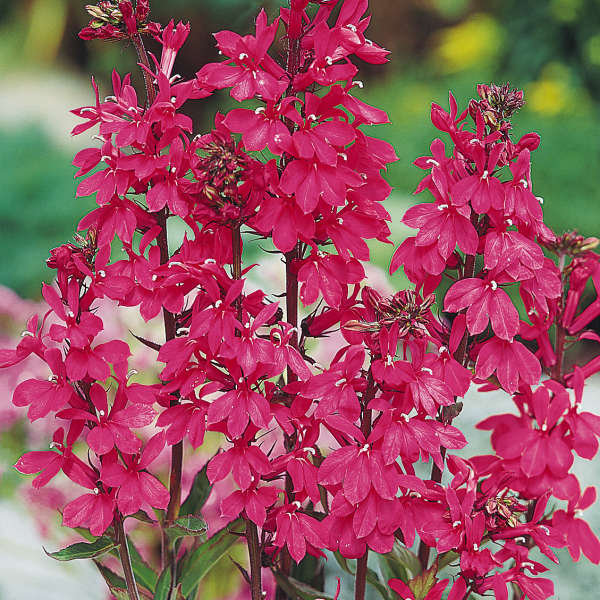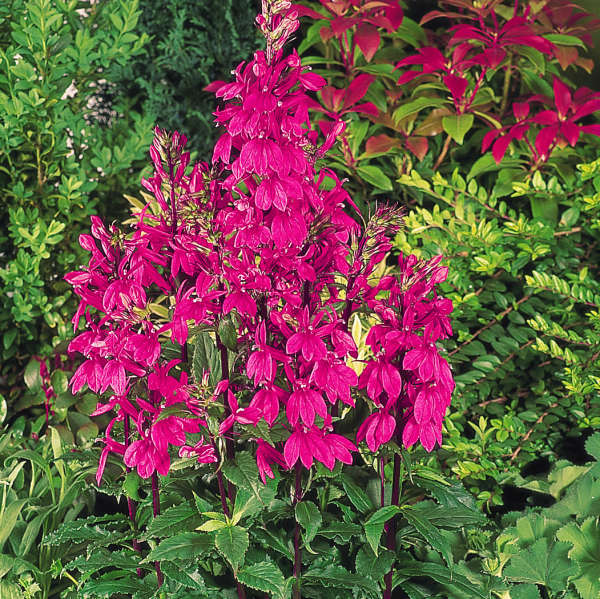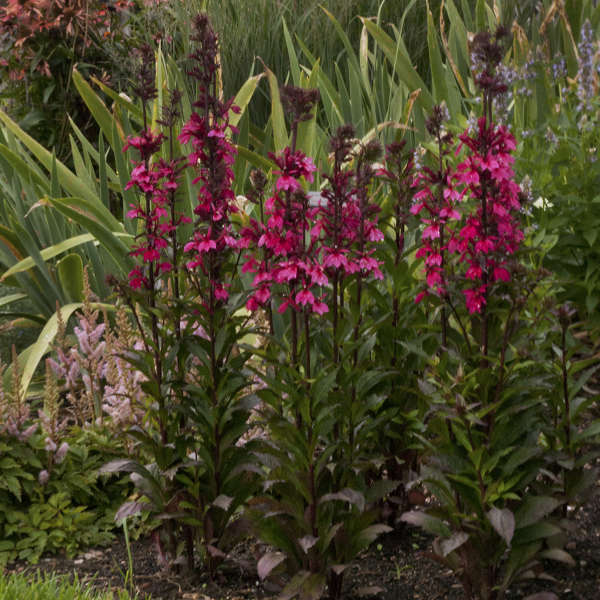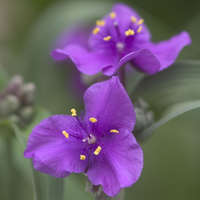Lobelia speciosa 'Fan Deep Rose'
Fan Series
Common Name: Cardinal Flower, Hybrid Lobelia
Unlike tall red cardinal flowers, members of the Fan® Series are much more compact and densely branched from the base of the clump. Some sources report that they are tetraploids, which would explain the robust growth and larger fan-shaped flowers. This selection produces magenta flowers on strong spikes from midsummer to early fall.
It forms a dense pillar of bronze stems carrying green to bronze green, pointed oval leaves. In our trials, as the summer progressed the foliage became flushed with purple.
Lobelia is an excellent border plant for moist locations and is a hummingbird magnet. It also attracts butterflies and swallowtails.



